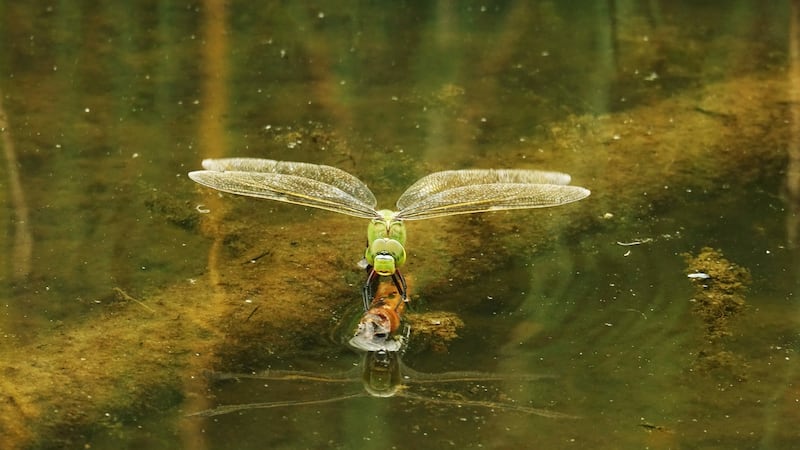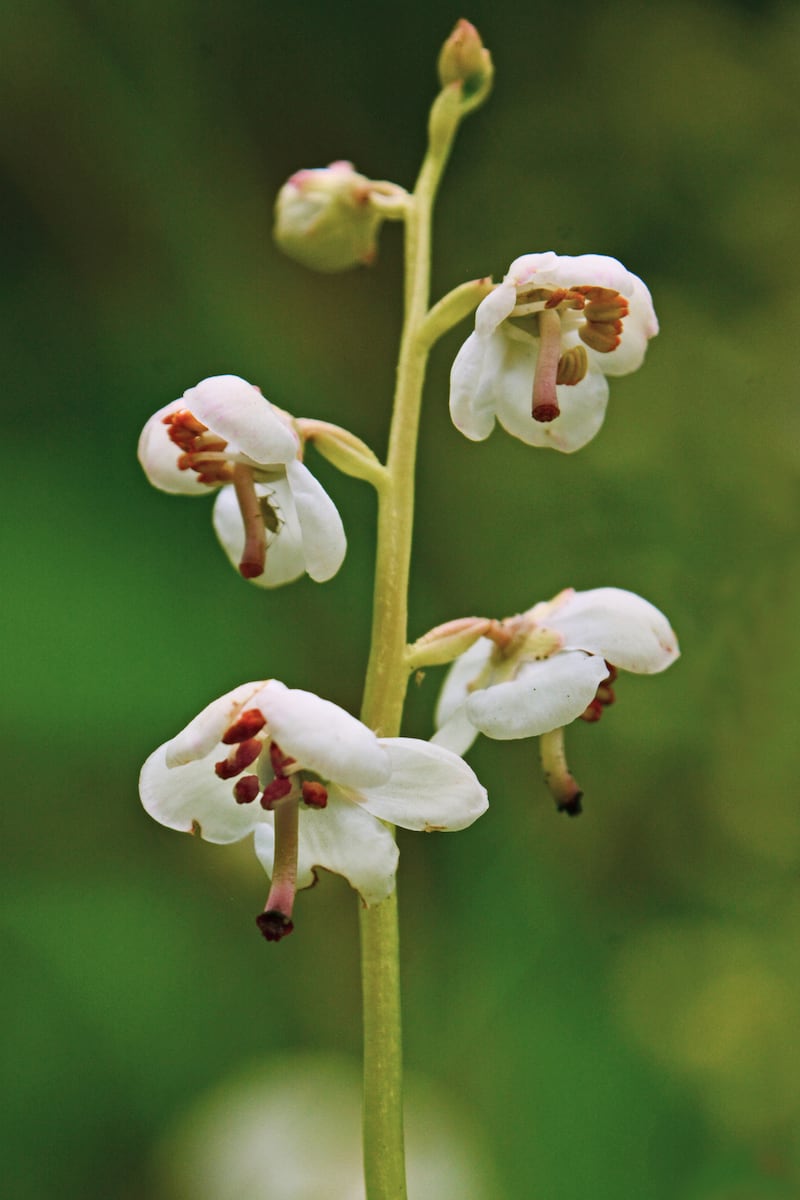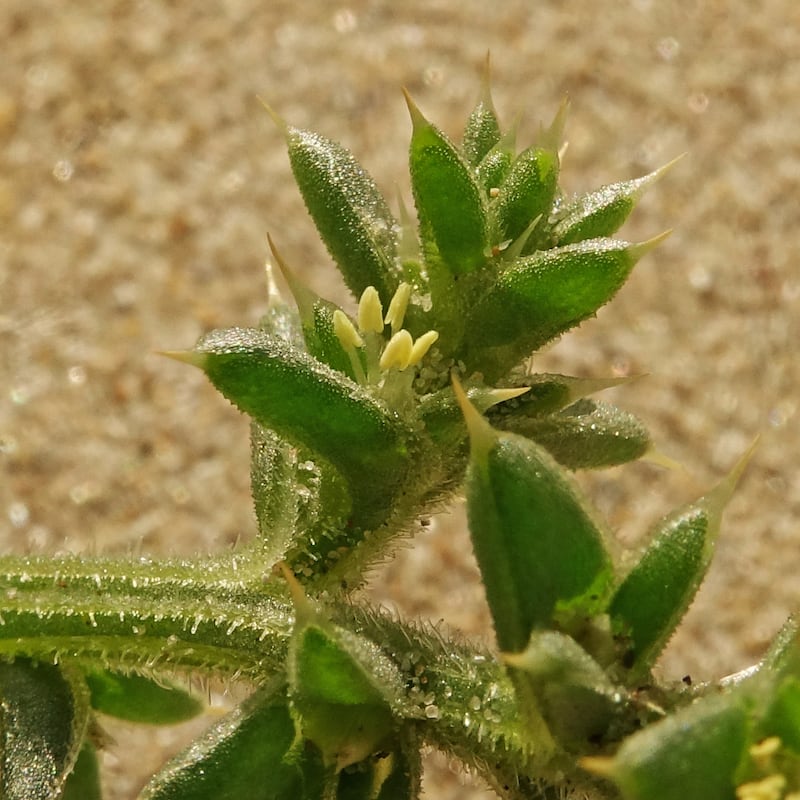“Pondlife” shouldn’t be a term of abuse, because pond life can be very, very beautiful. Zoe Devlin and I are watching dragonflies over a pond in the Raven Point Reserve, Wexford.
A couple of really big ones shoot by, flashing scintillating blue. Two or three others arrive, also blue but smaller and, it seems, with more conspicuous dark spots. But they fly so fast, with such abrupt swerves and reversals that the eye can hardly follow them, let alone make out any clear details, or catch them on camera.
Another photographer hears us struggling to identify them, and kindly comes round to help us out. The huge blues, he says, are the aptly named emperor dragonflies, close to 8cm long. The smaller ones, he thinks, are probably migrant hawkers.
Both species are newcomers to Ireland, and turned up first in the southeast, possibly driven by climate change. We have been looking at males of each species, engaged in intense sexual rivalry for the favours of females, lurking in the rushes and sedges around the pond.

Our new companion not only knows his dragonflies, he also recognises Devlin as the author of a very useful website (wildflowersofireland.net), and three well-loved books, on Irish wildflowers. He praises her expertise.
“It’s not expertise,” she says. “It’s enchantment.”
Actually it’s both, but what makes Devlin’s expertise so accessible and infectious is indeed the sense of wonder that she brings to every plant she identifies, whether commonplace or rare.
We had not come here to look for dragonflies at all, but one of the pleasures of nature walks is that you can expect the unexpected.
Raven Point is just south of Curracloe beach, stretching down 4km to a sandy spit north of Wexford harbour. This is a sand-dune ecosystem formed over centuries, but radically transformed by conifer plantations, initially mainly Corsican pine, since the 1930s.
Land of the Slobs
The pines stabilised the highly mobile dunes, preventing them from marching on into the rich agricultural land of the Slobs to the west. The woods also shaded out much of the Raven’s rich ground vegetation, and dried out many of the diverse mini-wetlands in the “slacks” (valleys) between the dunes.
Nevertheless, many lovely flowers, and some rare treasures, survive. We are hardly into the woods when Devlin points out some common stork’s-bill in the sandy soil. Shortly afterwards we find a small geranium, also pink, dove’s foot crane’s-bill. Nearby we find common pansies, with their yellow dune subspecies, Viola tricolour curtisii, putting in an appropriate appearance just metres away.
We move towards the sea, deeper into the dunes, to find one of the Raven’s specialities. The understory is at first monopolised by bracken, a problem that surely demands ecological management. But it soon opens out to rippling displays of the much less pushy, and very elegant, polypody fern, Its spare green silhouettes are variegated by light falling though the pine needles.
And suddenly, among them, there is a patch of something else. I would have walked right past it, but Devlin zones in on the colour shift from 30m away. The new plant’s small dark green leaves are fleshy and rounded. They are nondescript, though they give the plant its name, wintergreen, because they last through the year. The long-stalked white flowers are small. But once you get down on your knees and look at them through a hand lens, as Devlin always does, they are very striking.

They hang upside-down. The pink style and stigma (female sex organs) protrudes down ostentatiously. It then curls slightly upward, an overall form that begs to be described, however paradoxically, as phallic. The yellow-tipped male sex organs (anthers) are more modestly tucked up among the petals, from where – this is mainly a self-pollinating plant – they drop their pollen to fertilise the stigma.
This distinctive subspecies of wintergreen (Pyrola rotundifolia maritima) is found only on this reserve, and at a few sites in Donegal and Sligo. Why it should be limited to just these two distant and opposite corners of our island is not at all clear.
On the spectrum
This question leads Devlin to ponder other issues, such as the strange co-existence of Mediterranean and alpine plants in the Burren. “There are hosts of theories about these things,” she says, “and perhaps one theory is right. But I love to think of them as mysteries.” We are back on the spectrum between expertise and enchantment.
As we continue towards the sea, we quite frequently find another characteristic plant of the area, the broad-leaved helleborine. This orchid is quite widespread, but very often overlooked. As Devlin puts it on her website, it is “one of those wildflowers which can best be appreciated by a really careful and close examination”.
Its self-consciously gorgeous cousin, the marsh helleborine, is also found in dunes and, as Devlin says, “it thrusts its lower lip out”. But the mauve and red petals of the equally beautiful flowers of the broad-leaved helleborine are almost hidden behind green protecting sepals. So it’s down on your knees and out with the hand lens again, if you want to enjoy them properly.
The variation in size within this species is very marked. One we find is barely 10cm tall, but another rises above a metre. Devlin also notes that some leaves are deeply veined, others almost smooth.
“This used to surprise me,” she says. “Aren’t all individuals in a species supposed to look alike? Then I thought of us humans. Some of us are tall, some of us are short, some of us have lines, others have smooth skin.”
She’s right, of course, but it makes identification more challenging.
We head on to find one more plant, in a very different habitat. The pines run right to the edge of the dunes, overlooking the sea. Down on the beach, a few hardy species, ultra-tolerant of salinity, survive in this harsh and ever-shifting environment.
Among them is the prickly saltwort, which has such tiny flowers that they have tested even Devlin’s photographic skills. She wants better images for her website. She has to lie right down to focus and, yet again, she finds enchantment where most of us would have walked on by.

WHAT TO SEE, AND WHEN, AT RAVEN POINT
“You need to visit a place every three weeks through the year to see everything it has to offer,” Devlin says.
In rather broader strokes, Raven Point offers a remarkably varied natural calendar.
Within a few weeks, great flocks of wintering geese, including the rare Greenland white-fronted goose, will be arriving on the neighbouring slobs.
From the end of the point, as sunset approaches, you can usually see the great spectacle of their evening flight, with its evocative symphony of musical calls, to roost on the Dogger and Fort Banks in Wexford harbour. Remember a torch, to find your way back in the dark. You can have the same experience in reverse, at dawn.
The geese will be gone by April, but in May and June, on warm days, you will sometimes hear the mating male chorus of the very rare natterjack toad, introduced to ponds near the tip of the point.
By June the wintergreen, whose leaves you may see all year, will be in flower again. And in July the helleborines restart their discreet but glorious displays.
[ wexfordwalkingtrail.ie/raven-point-woodOpens in new window ]



















